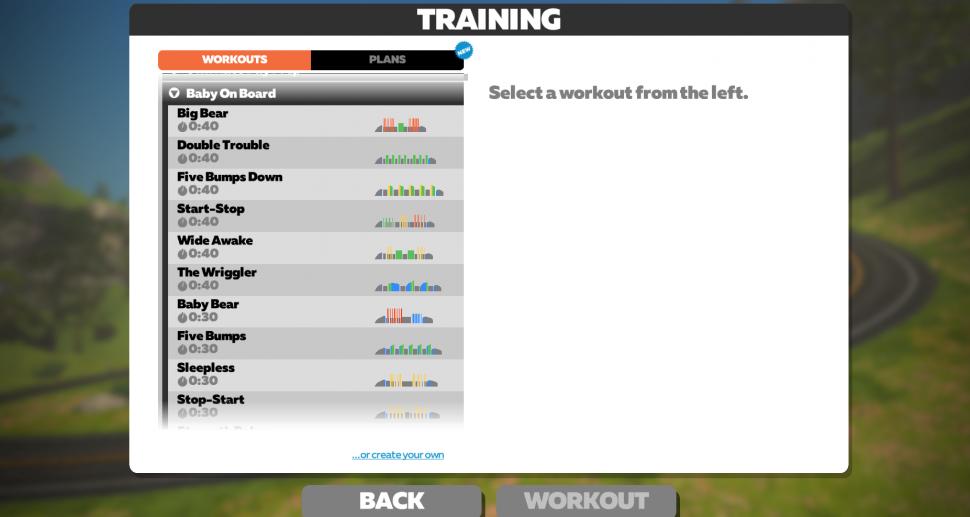- News
- Reviews
- Bikes
- Components
- Bar tape & grips
- Bottom brackets
- Brake & gear cables
- Brake & STI levers
- Brake pads & spares
- Brakes
- Cassettes & freewheels
- Chains
- Chainsets & chainrings
- Derailleurs - front
- Derailleurs - rear
- Forks
- Gear levers & shifters
- Groupsets
- Handlebars & extensions
- Headsets
- Hubs
- Inner tubes
- Pedals
- Quick releases & skewers
- Saddles
- Seatposts
- Stems
- Wheels
- Tyres
- Tubeless valves
- Accessories
- Accessories - misc
- Computer mounts
- Bags
- Bar ends
- Bike bags & cases
- Bottle cages
- Bottles
- Cameras
- Car racks
- Child seats
- Computers
- Glasses
- GPS units
- Helmets
- Lights - front
- Lights - rear
- Lights - sets
- Locks
- Mirrors
- Mudguards
- Racks
- Pumps & CO2 inflators
- Puncture kits
- Reflectives
- Smart watches
- Stands and racks
- Trailers
- Clothing
- Health, fitness and nutrition
- Tools and workshop
- Miscellaneous
- Buyers Guides
- Features
- Forum
- Recommends
- Podcast
feature
Cycling while pregnant: Bump and Ride part 1: here's how to safely cycle through the first trimester of your pregnancy
This article and video includes paid promotion on behalf of Cannondale and Ale Cycling.
Do you want to continue cycling while you're pregnant, but are unsure about the best way to go about it safely for the health of you and your baby? Exercise can give you structure to your day and focus throughout the long pregnancy period, as well as keeping you fit and prepared for childbirth. There are a lot of benefits if done correctly, so read on to find out what you need to know…
A number of high profile women including Lizzie Deignan and Laura Kenny have cycled all the way through to full term and returned very successfully to the sport, which is by no means a small feat.
> Cycling while pregnant: Bump and Ride part 2: how to carry on cycling safely through the second trimester of pregnancy
> Cycling while pregnant: Bump and Ride part 3: what to expect during the third trimester of pregnancy
Becca Charlton: Cycling while pregnant
In a series of videos coming to our YouTube channel, road.cc’s very own presenter Becca Charlton has been sharing the experiences of her current pregnancy journey, and turning to the experts including GP Ralph Mitchell.
“I started racing bikes when I was around seven years old so I’ve garnered a fair wealth of knowledge about cycling over the years, but when I started my pregnancy journey I could not have been more clueless,” Becca admits.
You can watch the first installment above to find out what you need to know if you’re an amateur rider like Becca. If you prefer good old words, read on to find out about the benefits of continuing to cycle, plus advice on what intensity you should be riding at, how to fuel and much more.
What’s going on in the first trimester?
Before bringing exercise into the mix, let’s start with the foundations and understand what you can expect during those initial weeks.
The first trimester begins on the first day of your last period, and runs up until the end of week 12. It’s that period of the pregnancy when you won’t be showing very much, but you’ll have a lot of unanswered questions as you don’t generally see a midwife until around 10 weeks in.
“I thought you when you get a bump, everything becomes harder and more challenging, but what I didn’t feel prepared for was the first trimester that no one talks about it for a lot of reasons,” Becca admits.
“People don’t want to disclose any information until they’ve got to their first scan, which was the case for me.
“I wasn’t visibly pregnant but my symptoms were by far the worst I’ve had so far in the journey."
“I was being sick before going on camera and I was just feeling unwell the whole time, but I couldn’t really say to someone, I need to go and sit down, I need to stop.”
If in doubt, speak to your GP. Ralph Mitchell shares that this is a period when he sees a lot of women who have concerns.
“Listen to your body,” recommends Ralph. “Nature has a wonderful way of telling us what to do when we’re in these scenarios.”
You can expect to be absolutely exhausted, as during the first trimester your body is getting on with some of the serious hard work - you are growing an entire human being after all!
“There are these huge physiological changes that are happening to you,” says Ralph. “It’s absolutely incredible what’s going on at that particular stage - the development of the heart, the lungs, the brain, all the limbs forming.
“The first few weeks are when the neural tube is forming. The neural tube forms the early brain and spine. Folic acid is a B vitamin that can help prevent neural tube defects. “[If you can], start taking folic acid before you start trying for pregnancy so when you do fall pregnant you’ve already got good enough levels in there."
“Your body will do what it needs to do as long as it’s given the energy to do that.
"Your body doesn’t need much, but it needs certain key things: good quality rest, sleep and nutrition.”
Ralph adds: “Sometimes junk food is just what you need when you're feeling a bit rough. If you're not eating all day then just crack on with the junk food.
“Don't feel guilty about it as long as it’s part of a healthy balanced diet, your body can do the rest.”
Benefits of keeping active during pregnancy
The 2019 Canadian guideline for physical activity throughout pregnancy is a resource Ralph recommends looking to understand how active you can be, safely.
“They’ve shown that 150 minutes of exercise per week - which is what the government recommends is the minimum for every individual in the United Kingdom - really does help with pregnancy,” Ralph highlights.
“It improves maternal wellbeing in terms of mood, reducing mental health issues in pregnancy by about 25%.”
Going on a ride can give you a tremendous sense of emotional satisfaction, you’ve done something for the day. It certainly helped former British professional cyclist Nikki Brammeier through her pregnancies.
“Some days I’d come home and I’d feel even more tired from doing the ride,” Nikki admits.
"But you still get those good endorphins, you feel like ‘okay, at least today I’ve given myself an hour or two’.
“You’ve cleared my head and you feel good - you’re moving, you haven’t just stopped.“
In addition to the mental health benefits, Ralph points out that exercise reduces the risk of gestational diabetes which is a big risk factor for both maternal and fetal complications.
“With gestational diabetes women run higher blood sugars,” Ralph explains.
"They can get big babies which can lead to more difficult labour - exercise reduces that by about 40%, which is a huge difference.
“There are studies to show that women who exercise consistently throughout pregnancy, within safe limits, actually go on to have better deliveries,” Ralph says.
“Women that do yoga, pelvic floor exercises also have a safer delivery and recover faster from the delivery process itself.
“It is absolutely crucial that people do exercise and they’re able to exercise safely. If you’re physiologically fit, you have a better chance of recovering from anything [such as operations] and that is equally as important in pregnancy.”
Keep exercising but at a level that’s moderate for you
The NHS website recommends carrying on doing the exercise you normally do: “Keep up your normal daily physical activity or exercise (sport, running, yoga, dancing, or even walking to the shops and back) for as long as you feel comfortable.”
But “do not exhaust yourself” it also states:
“As a general rule, you should be able to hold a conversation as you exercise when pregnant. If you become breathless as you talk, then you're probably exercising too strenuously.”
If you’re continuing with your 'normal' level of exercise, for anyone who’s trained you aren’t chatting away mid-interval, and so it can be difficult to know how to interpret this advice.
There’s not really a way of putting a percentage effort level on it though, according to Ralph: “What they mean is moderate to you.
“You wouldn’t want to be doing horrifically hard interval training, but you also wouldn’t be cruising at around 75 to 100 watts doing nothing - it’s finding that middle ground.
“It’s about the amount of exercise that you can do whilst holding a conversation and that will be completely different to somebody else's.”
It’s important to listen to your body and not compare yourself with others. This can be hard if you are scrolling through social media and viewing others' experiences. But, you shouldn’t be saying, "that person’s doing X amount of exercise and so I need to be doing that too."
“I've been having lovely messages and conversations on Instagram with other pregnant women who have the same mindset as me when it comes to exercise,” Becca shares.
“But I've also had some people say, ‘you know what, it's actually quite hard to see other people able to exercise and keep doing things because I'm having a difficult time with the pregnancy and perhaps ‘my health advisor has said, rein it in, don't exercise so much’.”
There are so many considerations and factors which will only be relevant to your particular pregnancy, so it’s important not to beat yourself up just because somebody else might be able to go on a ride and you can't.
How much is too much in those first few weeks
Neural tube defects happen in the first few weeks and so you may have concerns, as Becca did, about whether intense, sweaty indoor workouts could cause issues.
“The evidence so far around neural tube defects and overheating has been more seen around saunas and hot tubs - prolonged raised core body temperature,” says Ralph.
“I’m not aware of anything specifically to exercise.“
Putting a fan on if you’re indoors as usual is a good idea, and sticking to sessions which are of a moderate intensity as the NHS recommends are also less likely to see you end up overheating.
The 2019 Canadian guideline for physical activity throughout pregnancy, added to the British Journal of Sports Medicine, suggests that there are certain cases when women shouldn't exercise, though, which they call 'absolute contraindications'. Ruptured membranes, premature, unexplained persistent vaginal bleeding all fall into this category.
Then there are relative contraindications which include recurrent pregnancy loss, gestational hypertension, symptomatic anaemia, to name but a few.
“You can do something but it’s a discussion with your GP, or midwife or obstetrician,” Ralph notes.
You can find the full list of absolute and relative contraindications over here.
How to fuel for bike rides
So, we’ve established that doing some exercise can certainly bring a wealth of physical and mental benefits, but it’s very important to ensure you’re fuelling your body sufficiently for your bike rides and, alas, this can be a lot more challenging during this period.
The morning sickness side of things was a struggle for Nikki. “I didn’t actually realise until I was pregnant, that morning sickness is not just in the morning, for me it lasted almost the whole day.
“It was just a struggle to eat at all really,” Nikki says.
“I was looking at food and just kind of wanted to run away from it and if I ate something, then I’d be sick straight away.”
It was a similar case for Becca: “I found in the first few months that I knew what I should be eating, but even the thought of having something acidic like an apple, fruit you’d normally think that’s great to get in, made me feel sick.
“I felt sick at the thought of anything that wasn’t entirely bland. I pretty much lived on packets of mini cheddars which I don’t think I’ve eaten since I was about 10 years old, but I couldn’t stomach anything other than crackers.”
You may find that on days when you want to do a bike ride there’s not much you could stomach and on these occasions don’t push yourself through a ride.
“If you’re two hours from home, feeling pretty rough and keeled over at the side of the road with low blood sugar and no supplies, that would be disastrous,” Ralph stresses.
“Listen to what your body can do for that particular day,” Ralph recommends.
"It might be that you’re like ‘right, I’m feeling a bit low, I don’t have much of an appetite, maybe an indoor turbo session is the only thing I feel like doing if I want to do anything at all.’”
“Don’t feel guilty if you can’t exercise on that particular day,” Ralph stresses.
“Pregnancies have good days and bad days, do what you can on the good days and don’t beat yourself up about the bad days.
“On those days you haven’t got much of an appetite stay at home. See it as the extra time your body needs to recover.”
Then on the days that you do ride, it’s important to listen to your body, taking simple things that you know you can tolerate and eat.
“If you don’t, for example, fancy anything with long [complex] carbohydrates, but you can manage a bit of fruit, then stick to bananas, things that have high sugar at the time to keep you going,” Ralph suggests.
“Don’t worry about your gels. The most important thing is you’re taking on sugar, some form of carbohydrate, during exercise.”
He reiterates: “Don’t run the risk of not taking on anything and going for a ride just because you don’t feel like eating.”
Focus on keeping hydrated
As well as keeping on top of your nutrition, staying hydrated is also important.
You may find you go through a similar experience to Becca, who shared: “I went through phases, especially out riding, when I felt like I was taking on adequate fluids but then I was clearly dehydrated most of the time.”
This is likely down to losing a bit more sweat, Ralph notes. “You’ve got a bigger blood volume circulating around your body.”
“If you’re not eating as much, you’re not taking in fluids from food as well so that can leave you dehydrated as well.”
“Like in slightly warmer weather, it is important to drink as much as you can.”
Don’t push yourself to ride every day
Don’t pressure yourself to ride on specific days, see how you feel on the day. Fuelling is incredibly important so don’t go out when you aren’t able to and it’s essential to stay alert while riding outdoors so if you’re feeling exhausted don’t push yourself to ride that day.
“I was a professional cyclist for many years so you get used to following a plan,” Nikki says, “that all goes out the window when you’re pregnant, you just have to take one day at a time.”
“Some days you can ride no problem,” Nikki recalls, “I’d be doing rides up to three hours, but then other days I’d go 20 minutes down the road and then end up thinking, there’s no point, my body’s obviously going through a lot and then I just turn around and go home.
“I found you’ve just got to tune into your own body, it is telling you what to do all the time and it almost sets a limit for you in how hard you can go.
“I just get to a point where I just can’t go any harder - I can just ride and that’s it.”
Moderate exercise does have benefits, but it’s not something you should be pressurising yourself to do so. “You’ve got to do it because you want to do something,” Nikki says, “it should be about enjoyment.”
Deciding on what type of riding to do
Next up is to consider the type of riding you feel comfortable doing during your pregnancy.
There are a lot of decisions to make in your pregnancy journey, and this is one area that’s very individualised. A choice Becca made very early on, for example, was that she was only going to ride the turbo or on gravel.
The turbo trainer can be the most compelling option, as you’re pretty much guaranteed not to fall off and you can easily moderate the intensity, while the less technical gravel riding gets you outside into the fresh air taking you off the beaten path away from other road users.
“Unfortunately statistically, my friends, my family, we’ve all been hit by car drivers and so I made the conscious decision that I didn’t want to introduce that element of risk, because as careful as I can be pottering down a gravel path or in the spare room on the turbo, I can’t control the other factors on the road,” Becca says.
"I would never proclaim to give advice to other people on that, but my personal decision on safety is to avoid crash risk wherever possible.”
If you are going on an outdoor ride, find a riding buddy to go with if possible so if you do have a problem, you’ve got support nearby. At the very least never go out without your phone, and let a partner, friends or relatives know where you’re going and when you expect to be back - these are steps that are worth taking regardless of if you’re pregnant.
If you are staying indoors and you’re looking for a bit of structure for your session, Zwift has its ‘Baby on Board’ workout collection which includes 24 sessions of between 30-40 minutes in duration.
“You can use it as a training plan, finishing two workouts per week, or pick and choose from the collection depending on how you’re feeling and what fits your schedule,” Zwift recommends on its site.
The workouts are designed to keep you active on the bike with short, less intense sessions, and these were written by Kristin Armstrong and Dani Rowe, two Olympic gold medallists who are both mothers themselves.
Is riding the rough stuff a no-go?
While gravel riding takes you away from cars, you may have concerns about whether you’re doing any harm to your unborn child by riding off-road on what can often be bumpy terrain.
“I was going down rocky bits on bikes and I was thinking, am I shaking the baby around in there?” Becca says.
If you’ve got any sort of complications, Ralph recommends having that discussion with your obstetrician or midwife who knows your particular pregnancy really well.
“If, for example, you had a condition like an incompetent cervix or other problems to do with the sack around the baby, you’d probably want to avoid rough terrain,” he notes.
“But speaking broadly, sort of mild bumping around isn’t going to be doing a huge amount to you.”
“Do what’s comfortable for you,” Ralph stresses. “Avoid anything high risk or high impact - the biggest risk would be falling off.”
If you are concerned but still want to get outside into the fresh air and avoid traffic, stick to gravel paths you are familiar with, that you know are tamer and well within your skill capacity.
You can also adapt your gravel bike set up by going for wider tyres, and running at low pressures so that the tyres better absorb vibrations.
> 10 ways to make your gravel bike more comfortable
There’s more to staying active than just riding…
It’s important to incorporate strength training into your routine to help you carry the extra weight of pregnancy, make your joints stronger, improve circulation and just generally help make you feel well and good.
“For cycling enthusiasts, it's easy to do the one thing you enjoy the most, but you have to think about other things as well,” Ralph points out.
“Pelvic floor exercises are absolutely crucial for the delivery and for afterwards so that you recover faster. It’s not all just about the bike, it’s what you do off the bike as well - yoga, stretching, all helps.”
The NHS website runs through stomach-strengthening exercises to ease backache, as well as pelvic tilt and pelvic floor exercises to help strengthen the muscles of the pelvic floor, which comes under great strain in pregnancy.
Have you cycled through your pregnancy? Do you have any other tips?
Anna has been hooked on bikes ever since her youthful beginnings at Hillingdon Cycle Circuit. As an avid road and track racer, she reached the heady heights of a ProCyclingStats profile before leaving for university. Having now completed an MA in Multimedia Journalism, she’s hoping to add some (more successful) results. Although her greatest wish is for the broader acceptance of wearing funky cycling socks over the top of leg warmers.




Bloody hell... How are you doing now?
And I liked endura too. Got a nice long sleeve mostly merino long sleeve a little while back, in orange.
No, the Ebay lights have been around for several years, this Lezyne light just appeared.
They shouldn't worry - the second part of the "tariff" refrain is "they can make it in US and they'll do very well".
"At the going down of the sun, it will get in our eyes and cause us to crash into things."
Been living in the area thirty years now and Brixton Cycles (and local riders wearing their famed Rastafarian colours jersey) has been an iconic...
Does the "super-loud yellow" also help alert (non-deaf / non-earbud-wearing) pedestrians? Or will it just mean dogs bark at me?
One thing that bothers me is the use of antidepressant med and driving, it never gets picked up by police. Most of these types of medicines state...
Indeed - but again these are perhaps questions we should keep asking. Even if the immediate answer is "well we are where we are" or "how on earth...